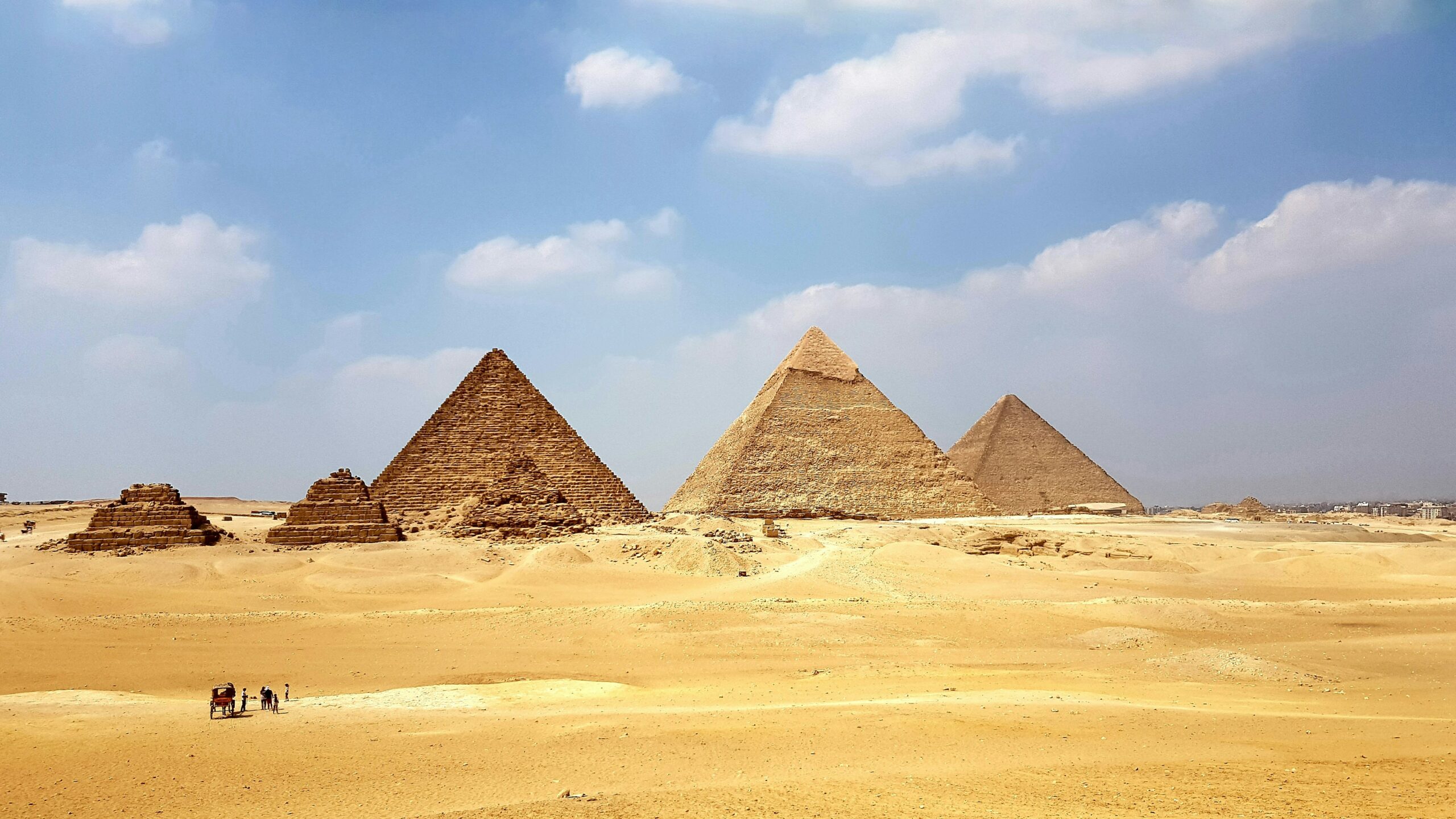Cairo and the Nile River-an escorted tour of Egypt
February 27th to March 10th, 2027
A 12-day tour of Egypt with seven nights cruising the Nile River with the services of knowledgeable guides and outstanding crew and staff. Seven nights aboard the luxurious River Tosca at the end of February offers a unique blend of comfortable climate, enriching cultural immersion, and spectacular ancient wonders.
Weather conditions
- Late February falls within Egypt’s cooler winter season, providing ideal weather for exploring ancient sites without the intense heat of summer.
- Expect mild daytime temperatures ranging from 20°C to 25°C (68°F to 77°F), perfect for outdoor activities.
- Evenings can be cooler, dipping to around 10°C (50°F), so it’s advisable to pack a light jacket or sweater.
- Rainfall is minimal, especially in the southern regions where the cruises primarily operate.
Onboard experience

- The River Tosca, operated by Uniworld River Cruises, is known for its elegant design, inspired by the warmth and style of Egypt.
- It’s an all-suite ship with comfortable and spacious cabins, featuring Egyptian cotton linens, a spa-like bathroom, and ample storage space.
- The ship boasts amenities like a sprawling Sun Deck with shaded cabanas and a swimming pool, a stylish lounge, a gym, and a spa.
- Enjoy a high level of personalized service with a near 1:1 staff-to-guest ratio.
- Dining is typically a highlight, with positive reviews about the quality of the food and service, sometimes even compared to Michelin quality.
- Onboard security is reportedly excellent, and the ship has a full water filtration system ensuring food and produce are safe to consume.
Exploring ancient wonders
- A Nile cruise on the River Tosca includes daily excursions to Egypt’s most cherished ancient monuments.
- Explore iconic sites like the Valley of the Kings, Karnak Temple, Luxor Temple, Temple of Philae, the Aswan High Dam, among others.
- Knowledgeable Egyptologists provide guided tours, sharing insights into the history and significance of the sites.
- Engage in unique experiences like a traditional felucca (sailboat) ride on the Nile and enjoying afternoon tea at the historic Cataract hotel, featured in Agatha Christie’s “Death on the Nile”.
- Optional excursions, such as a flight to the magnificent temples of Abu Simbel, are often available.
In essence, a River Tosca Nile cruise in late February promises a luxurious, comfortable, and enriching journey through the heart of ancient Egypt, allowing you to discover its wonders in pleasant weather conditions with top-notch service and expertise.
Cruise the Nile in a manner once reserved for queens and pharaohs. A detailed itinerary.
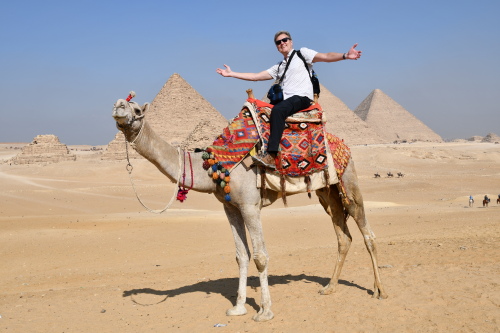
For 12 adventure-filled days, experience Egypt and the Nile’s most wondrous sites in style and luxury.* Wander amongst the towering ruins of the Temple of Karnak, the world’s largest ancient religious complex, and the entrancing Temple of Luxor. Follow in the footsteps of renowned scholars and explorers as you venture forth into the Valley of the Kings, the ancient burial grounds of Egyptian royalty.
This captivating itinerary begins and ends in Cairo, gateway to Giza. Here, you’ll visit the mighty ancient pyramids, gaze upon the Great Sphinx, and enter the largest archeological museum in the world, the Grand Egyptian Museum.
Day 1 ARRIVE CAIRO
Arrive at Cairo International Airport. Make your way by Uber (preferred) or taxi to the opulent Four Seasons Hotel Cairo at Nile Plaza or to the stunning Nile Ritz-Carlton (or similar). Hotel details will be provided 3 months prior to arrival. Our group will gather this evening for a welcome drink at the hotel.
Day 2 CAIRO
The ancient quarter of Cairo is intense—the colors, the sounds, the density of people—and it’s likely been this way for thousands of years. Your local expert will show you a 12th-century citadel, the beautiful Alabaster Mosque, and the Grand Egyptian Museum.
Note: Dressing modestly is recommended as a show of respect for the culture and customs of the Egyptian people. In particular, women should ensure that shoulders are covered and legs are concealed at least to the knee on all shore excursions throughout this itinerary.

Featured Excursion:
Citadel of Salah Al-Din, The Alabaster Mosque, & Grand Egyptian Museum
Your tour of this historic city includes a visit to the Citadel of Salah al-Din, a massive compound containing mosques and museums and offering breathtaking views of Cairo. Founded in the seventh century by Arab conquerors, the Fatimid dynasty rulers made Cairo their capital and named it al-Qahira (“the Victorious”). The great sultan Salah al-Din built his citadel in the 12th century as a government center and bulwark against invading armies of Crusaders. Located high above the eastern end of Cairo on El-Moqattam Hill, the citadel was the home of Egypt’s rulers for more than 700 years and is one of the oldest attractions in the city.
After the Ottoman ruler Muhammad Ali seized power in the 1800s, he restored the walls of the citadel and built numerous palaces, schools and government buildings inside. His masterpiece was the great Alabaster Mosque, also known as the Mosque of Muhammad Ali, which you’ll have an opportunity to visit. Its two slender minarets were Muhammad Ali’s declaration of independence from Istanbul, as Ottoman law decreed that only a sultan could build a mosque with two minarets. The mosque’s expansive Turkish-style interior is lit by a beautiful array of lamps suspended from the intricately decorated ceiling.
Finally, end your day admiring artifacts from across the millennia of Egyptian history during a guided visit to the Grand Egyptian Museum. Also known as the “GEM,” this long-awaited cultural institution is the largest archeological museum in the world.
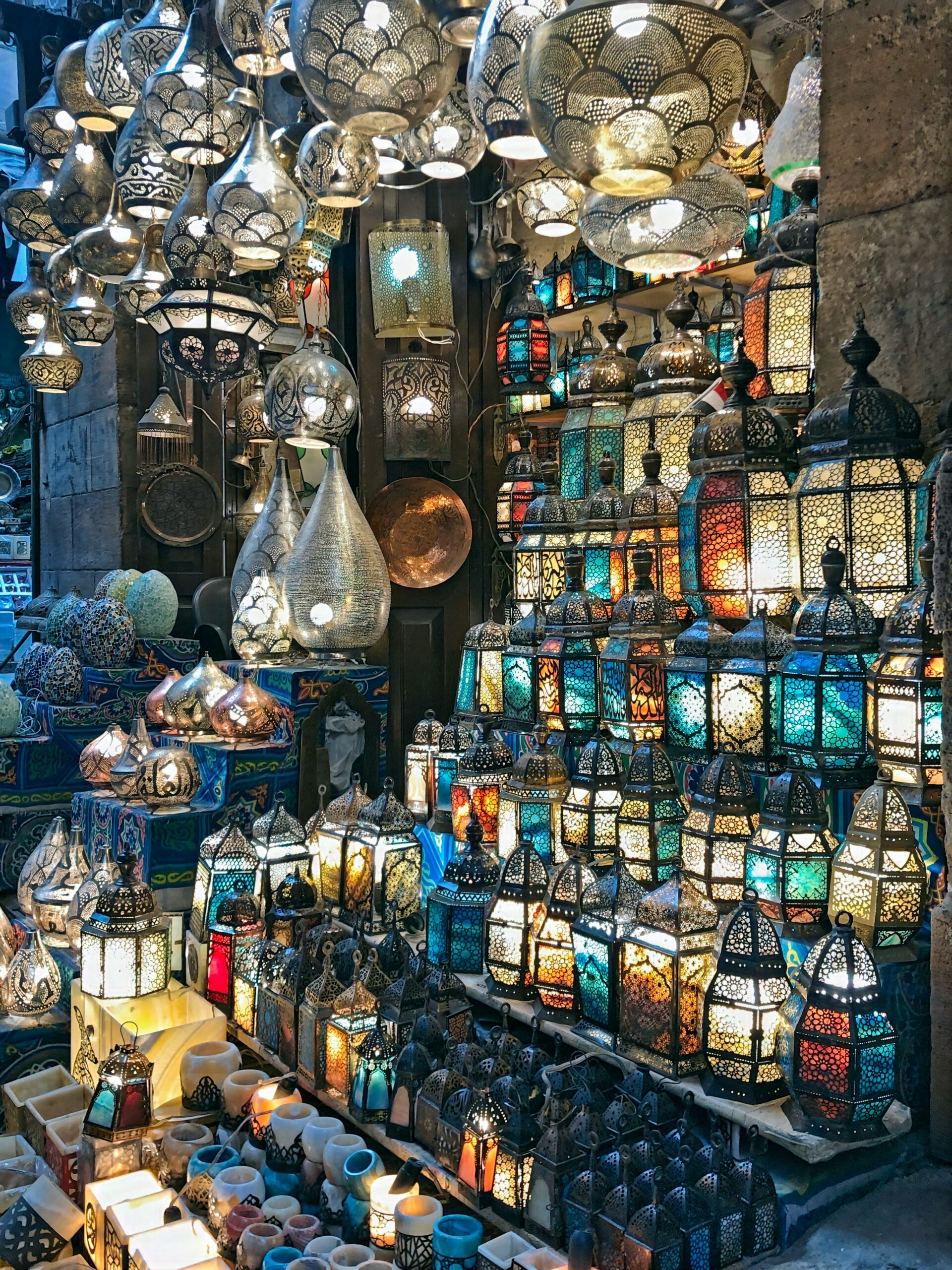
Day 3 Cairo, Fly to Luxor (Embark) Cruising the Nile, Dendera
Prepare to be amazed at the legendary Temple of Karnak, a massive and absolutely astounding site, with gigantic columns, broad avenues lined with stone sphinxes and halls of truly epic proportions. This evening, you’ll revel in a Welcome Reception and Dinner onboard.
Note: Flights to Luxor depart early in the morning to take advantage of more favorable weather and traffic conditions, and to optimize tour scheduling.
Before dinner onboard this evening, guests will be treated to a folkloric dance performance. A local band of dancers, in traditional costumes representing different Egyptian districts, will perform a Whirling Dervish show.
Featured Excursion:
Temple at Karnak
After a short flight to Luxor on the east bank of the Nile, you can stroll through the grand avenues of sphinxes and halls of gigantic columns of the magnificent Temple of Karnak. This vast complex, situated about 2 miles (3.5 kilometers) from the Temple of Luxor, was originally established during the Middle Kingdom (1991-1633 BC), and various dynasties over the next 1,300 years continued to expand it. Karnak is a massive and simply astounding site, reflecting the combined achievements of many generations of ancient builders—as many as 80,000 laborers took part in its creation during the 19th Dynasty alone.
Buried under sand for a thousand years, the UNESCO-designated Karnak complex is composed of three main temples, smaller enclosed temples and several outer temples. The largest of these is dedicated to Amun, a great pharaonic god. Enter the main compound, the Precinct of Amun, through the Great Court, and continue on to the dazzling Great Hypostyle Hall—sometimes called the Hall of Columns—an imposing forest of 134 enormous sandstone columns in the form of papyrus stalks.
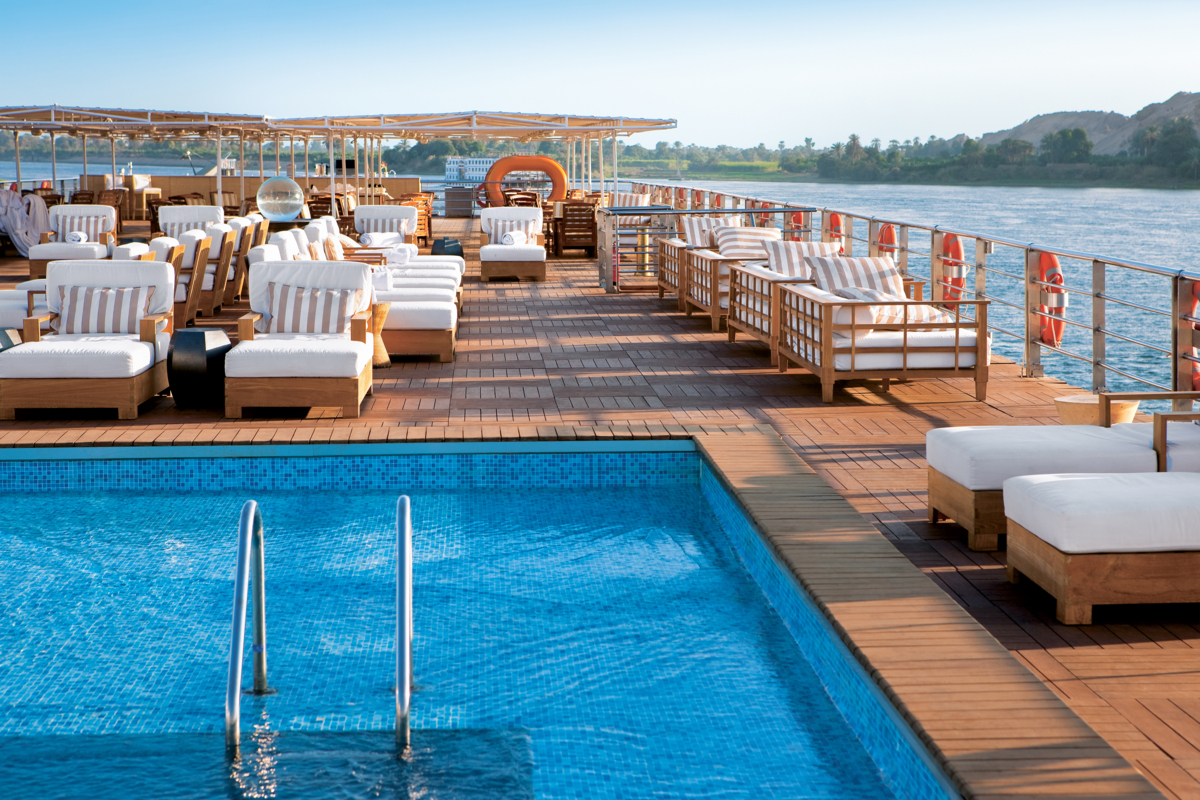
Later, you’ll board the elegant River Tosca and set sail for beautiful Dendera. Enjoy a Gala Reception and dinner onboard this evening.
Day 4 Luxor, Cruising the Nile River, Kom Ombo
Like its twin shrine, the Temple of Karnak, the Temple of Luxor stands on the site of ancient Thebes, the once flourishing capital of Egypt’s New Kingdom. It was built over hundreds of years and even in ruins it is still an extraordinary place. You’ll also visit the Temple of Hathor, dedicated to the goddess of love and beauty.
Featured Excursions:
Temple of Hathor, Temple
The impressive Temple of Hathor at Dendera was dedicated to the goddess of love and beauty. The temple dates to Egypt’s Ptolemaic era, when the heirs of Alexander the Great ruled over Egypt and adopted Egyptian culture and religion as their own. Built between 125 BC and AD 65, it is one of the best-preserved temples in all of Egypt and features a rare bas-relief of Cleopatra with Caesarion, the son she bore to Julius Caesar. Return to Luxor for some free time before visiting the ancient Temple of Luxor.
Temple of Luxor
Enter the temple through the great pylon—a ceremonial gateway—where two enormous statues of Ramses II still stand, along with a pink granite obelisk (its mate stands in the Place de la Concorde in Paris, France). Continue on to an enormous interior courtyard, where the Abu Haggag Mosque once stood atop the ruins of the temple. You can still see a ghostly remnant of the mosque on the east side of the courtyard, high above the columns, its arched doorway opening into thin air.
The temple’s chief architects were Amenhotep III (Egypt’s “Sun King,” also known as Amenophis III) and Ramses II, and it was constructed over hundreds of years, beginning around 1400 BC. It was dedicated to the “father of all life,” the god Amun, sometimes referred to as Amon or Amon-Ra. Ancient Egyptians came to the temple to pay tribute to this god during the Opet Festival, celebrated during the annual flooding of the Nile. Once a year, a great feast was held and the statue of Amun was transported via a small sailboat from the Temple of Karnak to the Temple of Luxor. (Stages of the festival are depicted in friezes along the Temple of Karnak’s grand processional colonnade, the construction of which was started by Amenhotep III and finished by his grandson, Tutankhamen.)
At the rear of the temple is the Sun Court of Amenhotep III, as well as the Bark Shrine that was rebuilt by Alexander the Great (who is depicted bare-chested on the walls). The Luxor Temple complex is at its most stunning at sunset, when it is illuminated with the golden glow of the setting sun.
Day 5 Luxor, Cruising the Nile River, Kom Ombo
The word “colossal” will take on a whole new meaning after today’s excursion to the gigantic twin statues known as the Colossi of Memnon. And that’s just the beginning—you’ll also visit the temple of one of Egypt’s rare female pharaohs as well as the Valley of the Kings, used as a royal burial place for nearly 500 years and where the mummified remains of Tutankhamen are on display.
Featured Excursion:
Colossi of Memnon, Hatshepsut Temple and Valley of the Kings
Get an up-close view of two gigantic statues of Pharaoh Amenhotep III, better known as the Colossi of Memnon. Sixty feet (18 meters) tall and gazing eastward toward the rising sun, the statues depict Amenhotep seated on his throne. Carved next to his legs are his mother and his wife, with side panels depicting the god of the Nile, Hapi. The figures originally sat in front of the mortuary temple of Amenhotep III and are believed to have surpassed even Karnak in size. Unfortunately, the temple itself was slowly dismantled over the centuries to provide building materials for new temples; the twin Colossi continue to stand guard nonetheless, just as they have done for the past 3,400 years.
The Temple of Hatshepsut at Deir el-Bahri is another highlight today. One of Egypt’s rare female pharaohs, Hatshepsut is considered by historians to have been one of the most successful rulers of ancient Egypt. Both the setting and the construction of her temple make it unique among the landmarks of Egypt; built into the face of steep cliffs at the basin, the temple is made of limestone instead of sandstone, unlike any other funerary temples of the New Kingdom period. Hatshepsut’s successor, Thutmose III, attempted to remove her name from the temple, and many images of the queen were damaged or destroyed during his reign.
You’ll also visit one of the most famous archeological sites in the world—the remote and barren Valley of the Kings, used for royal burials for nearly 500 years. Much of our understanding of Egyptian mythology has been garnered from these ancient chambers, located about four miles (seven kilometers) inland on the west bank of the Nile. It was here that the bodies of great pharaohs such as Ramses II and Thutmose III were once laid to rest and where the mummified remains of the boy king Tutankhamen are still on display. The idea for establishing this royal burial ground is thought to have originated with Thutmose I, who opted to conceal his tomb far from his mortuary temple in an effort to deter tomb robbers. Subsequent pharaohs did the same, changing a tradition that had endured for close to 2,000 years.
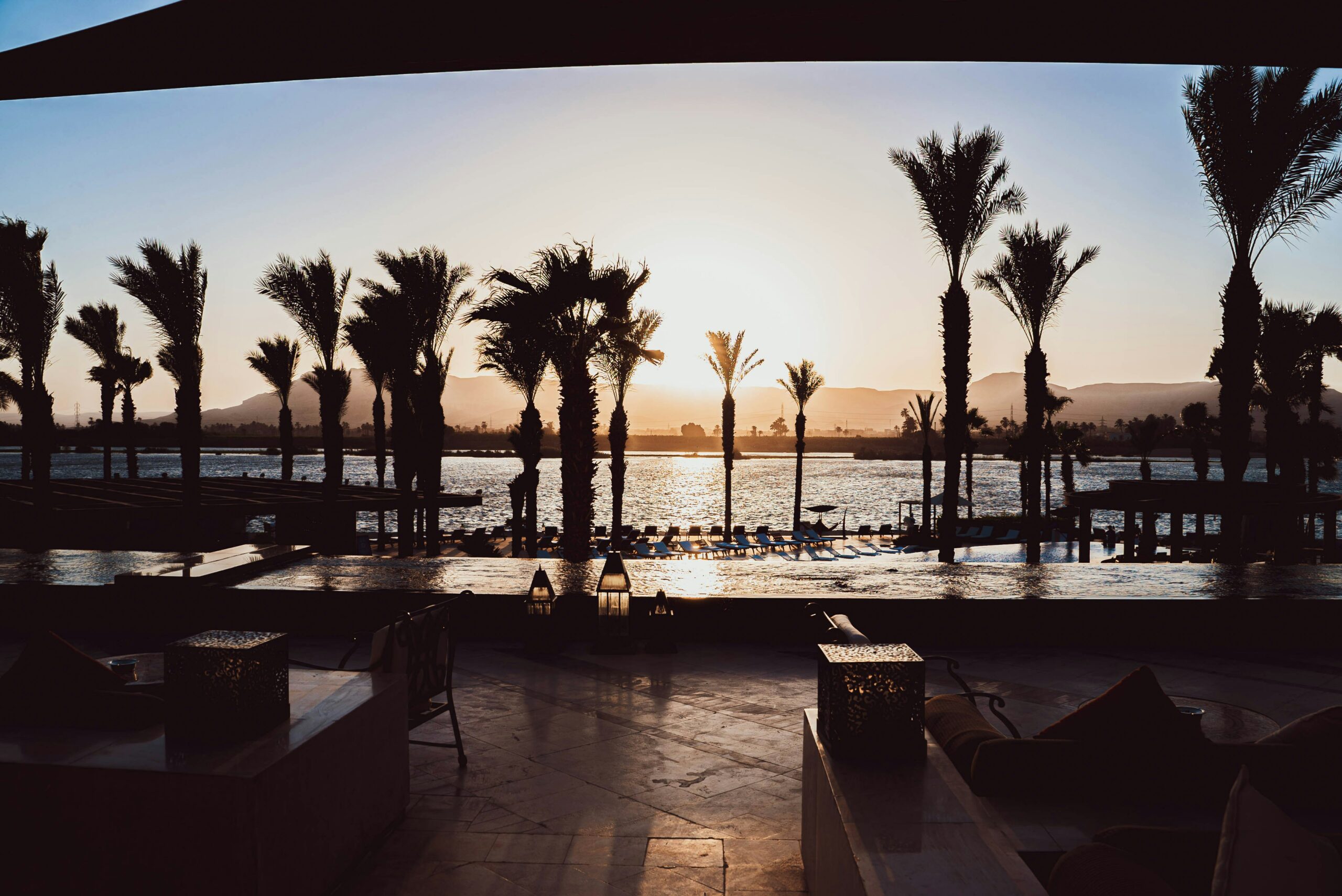
Within the tombs and along the walls of the Valley of the Kings, inscriptions from the Book of the Dead provided instructions on how the pharaohs could safely journey to the next world and avoid the dangers that lay on the way. For the sake of preservation, only a handful of the most interesting tombs are open to visitors at any given time.
Return to the ship and set sail for Kom Ombo. Tonight, don your galabeya (traditional Egyptian attire, samples of which will be available for purchase onboard if you’d like to participate but didn’t bring your own) for a festive onboard party featuring traditional Egyptian music.
Day 6 Kom Ombo, Cruising the Nile River, Aswan
After visiting a temple dedicated to a crocodile god today (don’t miss the display of some of the 300 mummified crocs found in the local area), take a ride in a felucca—a traditional Egyptian sailboat—and enjoy afternoon tea at a famous hotel depicted in Agatha Christie’s novel Death on the Nile.
Featured Excursions:
Kom Ombo Temple
The Kom Ombo Temple, unlike most ancient Egyptian temples, is dedicated to two gods—the crocodile god Sobek and the falcon god Horus the Elder. Construction began under the reign of Ptolemy VI Philometor (180-145 BC) and continued under later rulers, most notably Ptolemy XIII (47-44 BC), who built the inner and outer hypostyle halls. Several of the 300 crocodile mummies discovered in the vicinity are displayed inside the temple.
Boat Ride in Traditional Felucca and Sunset Tea at the Old Cataract Hotel Aswan
Today you will sail serenely down the Nile in a felucca— a small traditional boat with large triangular sails—a wonderful way to experience the river as Egyptians have for a thousand years. Later, relax over tea at the historic Old Cataract Hotel Aswan, a colonial-era gem that counts Winston Churchill and Princess Diana among its former guests. This famous hotel was depicted in Agatha Christie’s acclaimed mystery novel Death on the Nile.
Note: Feluccas are wind-powered and thus will operate only if weather conditions permit.
Day 7 Aswan
Today is an epic day, filled with wonders from start to finish. You’ll visit a marvel of modern engineering—the Aswan High Dam—as well as the Unfinished Obelisk and the beautiful Philae Temple complex, which was moved from one island to another back in the 1970s. But wait, there’s more. You’ll also hop aboard a small boat for a bird-watching excursion along the Nile.
After dinner onboard this evening, you’ll be treated to an enchanting Nubian show featuring traditionally attired performers, live music and dancing.
Featured Excursions:
Aswan High Dam, Unfinished Obelisk and Temple of Isis
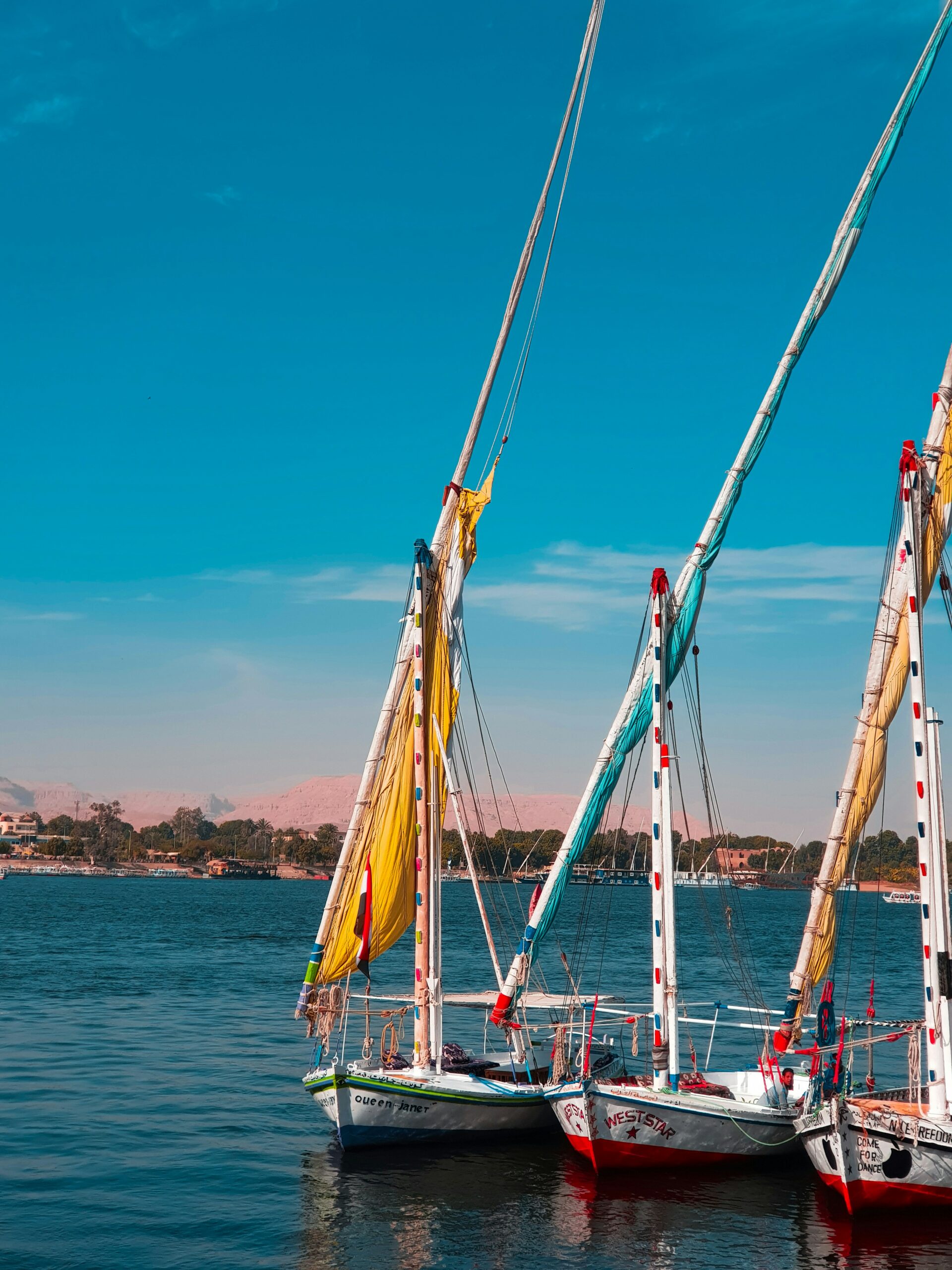
The Aswan High Dam, completed in the 1970s, is a marvel of modern engineering that boasts some truly epic dimensions—it is 11,800 feet (3,597 meters) long; 3,215 feet (980 meters) wide at its base; and 304 feet (93 meters) high—with a reservoir capacity nearly five times that of the Hoover Dam. You’ll also visit the Unfinished Obelisk, commissioned by Queen Hatshepsut yet never completed due to a flaw discovered in the stone. If completed, it would have been the largest and heaviest obelisk ever attempted, weighing more than two million pounds (907,185 kilograms).
Another highlight today is the beautiful Philae Temple complex, originally situated on the island of Philae. It was painstakingly transferred to the island of Agilkia after the construction of the Aswan High Dam to save it from the rising waters of Lake Nasser, a daunting UNESCO-funded endeavor that took 10 years to complete. The three principal monuments on the island all date from the Ptolemaic and Roman periods—the Kiosk of Trajan, the Temple of Hathor and the Temple of Isis.
Note: Guests are welcome to climb around the Unfinished Obelisk, but please note the climb is physically demanding.
Life on the Nile Tour by Motorboat
After a scenic cruise to Aswan, take a small boat along the banks of the Nile on a bird-watching excursion. Watch out for colorful native birds, different species of herons, kingfishers, vultures, sunbirds and other wildlife that thrive in the marsh grass along the riverbanks.
Day 8 Aswan, Cruising the Nile River, Edfu
Spend the day at leisure or join us for an optional excursion to see the magnificent temples of Abu Simbel.
Featured Excursion:
Masterpiece Option-Excursion to Abu Simbel for an added fee of $395
The Temples of Abu Simbel were constructed by King Ramses II—one of Egypt’s most celebrated Kings. Built in 1244 B.C., Abu Simbel sat on the west bank of the Nile River for 3,000 years. In the 1960s, the entire temple complex was dismantled and rebuilt on a higher hill to accommodate Aswan High Dam—a remarkable effort co-operated by the Egyptian government and UNESCO. Today, the temples are still one of the most recognizable ancient sites in Egypt. From Aswan, you will take a short flight to Abu Simbel. Once arriving on site, your guide will give you a history of the temple. Afterwards, take time to marvel at the exquisite detail as you wander through the temples yourself. Don’t forget to take pictures! You will then take a flight back to Aswan.
*Masterpiece Collection are optional experiences that go above and beyond our daily selection of included excursions and can be booked for an additional fee. Select Masterpiece Collection Optional Experiences can be pre-booked. Please note that requests to pre-book must be made by calling our Reservations Team no later than 6 days prior to departure and are subject to availability. Some venues are limited in the number of guests they can accommodate. Guests can book onboard (space permitting) and pay in USD. Pre-booked Masterpiece Collection Optional Experiences are refundable up to 5 days prior to the cruise/tour start date; if inside of 5 days they are non-refundable. Select Masterpiece Collection Optional Experiences require a minimum number of participants and are subject to cancellation (with full refund) if minimum is not met. Masterpiece Collection Optional Experiences are non-commissionable. Prices are subject to change. Masterpiece Collection excursions may not operate if they occur on a holiday or if they require a minimum number of participants and that minimum is not met.
Day 9 Esna, Cruising the Nile River, Luxor
On today’s excursion, you’ll learn how the Temple of Esna was buried under debris for many centuries and is one of the last great Egyptian temples ever built. Your Egyptologist guide will share all sorts of fascinating insights about this significant cultural site and show you the façade bearing the last known hieroglyphic inscriptions ever recorded in Egypt. Later, savor the Nile’s majestic scenery as the ship cruises to Luxor.
Featured Excursion:
Temple of Khnum
The Late Roman Temple of Esna lies on the west bank of the Nile about 34 miles (55 kilometers) south of Luxor. Buried under debris for many centuries, the temple is just a short walk from the ship through the local market. It dates from the Ptolemaic and Roman period (180 BC to AD 251) and is one of the last Egyptian temples ever built. Visitors can see two large inscriptions praising Khnum, the ram-headed god of creation, who fashioned mankind on a potter’s wheel from the clay mud of the Nile. There’s also a hypostyle hall with 24 pillars and a ceiling depicting Egyptian astronomical figures and Roman zodiac signs. On the temple’s western wall, look for images of Horus, the god of victory, and Khnum, dragging a net full of fish. At the foot of this façade are the last known hieroglyphic inscriptions ever recorded in Egypt.
Day 10 Luxor (Disembark), Fly to Cairo
Disembark in Luxor and transfer to the airport for your return flight to Cairo. After checking in to your luxury hotel, you’ll have time to relax on your own and explore Cairo at your leisure. Alternatively, join a Masterpiece Collection visit to one of Egypt’s great museums.
Note: Flights to Cairo depart early in the morning to take advantage of more favorable weather and traffic conditions, and to optimize tour scheduling.
Day 11 Cairo
It’s a day of Bucket List Moments today as we venture to see a number of amazing monuments—including the enigmatic Great Sphinx. You’ll have a thrilling opportunity to view the pyramids from an up-close perspective, the only way to fully appreciate their remarkable size and grandeur.
Featured Excursion:
Pyramids at Giza, the Great Sphinx, and Sakkara Visit
At the Giza Necropolis, the face of ancient Egypt—the Great Sphinx—awaits your visit. With the body of a crouching lion and the head of a man, it is the largest monolith statue in the world. Experts believe that the Sphinx (known to the early Arabs as Abu al-Hol, “Father of Terror”) was built in the 26th century BC during Khafre’s reign, perhaps as a portrait of the pharaoh himself. Unfortunately, much of this monument has either eroded or been deliberately destroyed over the years. Some of its facial features are no longer intact, such as the beard and the nose—the latter of which was not shot off by Napoleon’s soldiers, as widely believed, but chiseled away many centuries earlier. A number of excavations in modern times have removed the sand that built up around the Sphinx over the centuries and kept much of it buried. Despite its timeworn condition, the Sphinx still kneels gracefully as it has for thousands of years, looking toward the east with an enigmatic smile.
Today you’ll also visit the only surviving Wonder of the Ancient World, the Pyramids of Giza. Beholding these legendary structures up close lets you appreciate their stone masonry and awe-inspiring architectural precision. Until as recently as the 19th century, the oldest and largest of the three pyramids—Khufu—was the tallest building in the world; when it was completed around the 26th century BC, it stood about 50 stories high.
You’ll also see the Step Pyramid of King Zoser (or Djoser) in nearby Sakkara, the oldest pyramid in the world and the prototype for all subsequent pyramids. The ancient architect and sage Imhotep initially designed the pyramid as a single story, then later added five more levels and covered the structure with a shell of fine limestone. In front of the pyramid, Imhotep built a stone structure containing a wooden box with two peepholes; peer inside and you’ll see a life-size painted statue of King Zoser. The peepholes were created to allow the king’s ka (life spirit) to communicate with the outside world.
Day 12 Depart Cairo
Check out of your hotel and transfer to the Cairo International Airport for your flight home, or extend your trip with a memorable optional extension in Jerusalem. I’m currently working on a post-tour extension to Israel. This tour extension will only be offered if conditions improve in the region.
Note: Ship schedule and order of sightseeing may change throughout the itinerary. Tour to port of destination by motorcoach and substitute visits to other sites may occur during your trip due to the impact of water levels, closures because of public holidays or other uncontrollable factors.
What’s Included
Dining
- Meals onboard prepared using the finest and freshest ingredients
- 11 breakfasts, 7 lunches, 8 dinners
- Welcome & Farewell Receptions
- Complimentary house wine, local beer, soft drinks, tea, and coffee will be served during lunch and dinner onboard
Excursions
- 8 days of excursions, all fully hosted by English-speaking trained Egyptologists
Accommodations
- 7-night cruise in a river-view stateroom on the gorgeous River Tosca
- Lavishly appointed river-view staterooms and suites
- 4 nights in Cairo at the Four Seasons Hotel Cairo at Nile Plaza or at the Nile Ritz-Carlton (or similar)
- Free Wi-Fi
Experiences
- An immersive experience with 11 days in Egypt
- 12 UNESCO World Heritage sites
- Services of an experienced Egyptologist
- Cultural enrichment
- Flights included between Cairo and Luxor
- Gratuities for onboard and onshore personnel (ship staff, crew, Cruise/Tour Manager or Egyptologist, local experts, drivers) are included both during the cruise/tour as well as on any pre- or post-cruise land extensions
Your pre-discount pricing for this cruise/tour is:
Cruise Discount Price Discount Price
Category with group and EBD* group, EBD, & Heritage
Royal Ste. (1)** $12,959 $12,719
Grand Ste. A (3) $ 8,159 $7,919
Grand Ste. AB (3) $7,759 $7,519
Grand Ste. B (2) $7,359 $7119
**Indicates the number of cabins available in each category. For an overview of the ship and the cabin categories, this LINK will take you to the Uniworld page associated with this ship. Uniworld revamped their pricing structure in September. They’ve broken the Grand Suite category into three levels. Same cabin, just varied placement on the ship. Here’s your new pricing grid with the group discount and the Heritage discount for Uniworld Alumni cruisers.
Deposit due to confirm your reservation is 10%. The balance of payment is due October 1st, 2026. There is no discount for check payment as all credit cards are processed directly through Uniworld. You may pay with Visa, Mastercard, or Amex. Once you complete the registration form, I will send a confirmation to you via email, followed by a link to the cruise line to make the deposit.
Miscellaneous Q&A…
Insurance
Uniworld offers a cancellation waiver for $663, but it only covers for the cruise and not for air expenses. Third party insurers are always preferable over cancellation waivers offered by the cruise line. Because your payments are non-refundable, travel insurance is recommended. I’ve had bad luck with many of these companies, so I am only providing links here to two companies that I have not had negative issues with.
https://www.generalitravelinsurance.com
https://www.travelexinsurance.com
Many policies have requirements regarding when policies are purchased, especially if you are insuring for a pre-existing condition. Both of the companies linked above have a non-binding quote system. Check them both.
Safety/Security
I traveled two years ago to Jordan and Egypt with the purpose of looking at the ship, and getting a sense of security and comfort of travel to the region. I was on my own, stayed in Giza and hired a local to show me the pyramids and ultimately a camel named Michael Jackson. I took the train on my own to Luxor to board the ship, then spent 2 wonderful nights onboard the Tosca. I never felt threatened or uncomfortable. It’s important to note that Egypt is wholly unaffected by events in Israel and Gaza. I would never state that any destination is “safe”, but I feel less at ease walking through Pioneer Square than anywhere I visited in Egypt or Jordan.
Flights
Airline options From Seattle include Turkish Air (Istanbul), Air France (Paris), Qatar (Doha), Emirates (Dubai), British (London), or Lufthansa (Frankfurt). Coach fares (as of 7/28/25) will run between $760 and $1400, depending on when you purchase. Premium Economy fares range from $1760 (Lufthansa), and $3600 (Emirates) with fares in between on Air France, British, and others. Business class fares start at $3800 (Lufthansa) and go from there. The Emirates and Qatar fares are a bit under $4500. As always, I recommend setting a fare alert on Google Flights or Kayak.com to receive notifications for this destination.
Documents
You’ll need a passport with at least 6 months validity to enter the country. You also need at least one blank page. Visas are required for American and Canadian visitors. Canadians must apply online or in person in advance of arrival. Americans can apply online or upon arrival. The cost is $30. There are a lot of online visa companies that pop up on a google search. Go directly to the government site. https://www.sis.gov.eg/
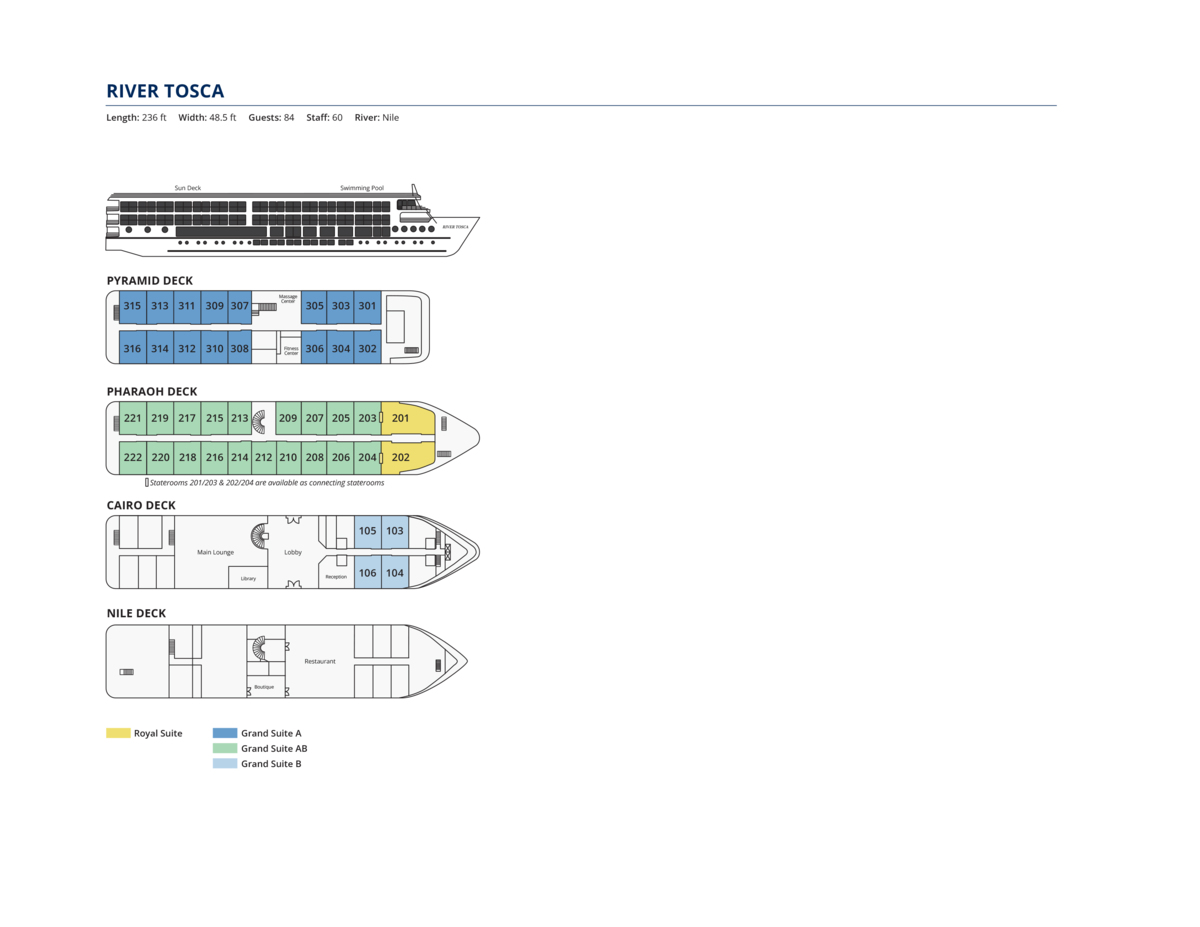
To book this tour, complete the form below. I will send confirmation within 24 hours. Questions? Comments? Contact me, preferably by email at brad@nwtravel.com, or by phone at 425 375 2676.

